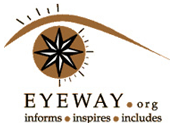CHANDIGARH: If your child tends to hold his book too close to his face while reading and blinks excessively, the doctor may recommend spectacles. In that case, convince him or her to wear it. Your child may not have a problem after being told that 29% of school students in the city suffer from refractive error, a condition which necessitates wearing spectacles.
According to a study conducted by Government Medical College and Hospital, which was published in the International Ophthalmology Journal, 30 private and government schools in Chandigarh were selected for the study and 29% of students were found to be suffering from refractive error. A total of 9,067 students in the age group of six and 16 years enrolled for the study.
Authors of the study, Dr Neeti Gupta, Dr Sudesh Kumar Arya, Dr Dinesh Walia, Dr Archana Mallik and Dr Sunandan Sood concluded that the prevalence of refractive error was higher in the senior age groups because they refused to wear spectacles owing to cosmetic reasons. "In case of school students, it is important that teachers be able to recognize changes in the behaviour or appearance of the child: rubbing the eye frequently, blinking excessively, holding the book close to the face, among others. Teachers should be trained in identifying common eye problems and should refer the child to an ophthalmologist," said Dr Sudesh Arya, main author of the study.
It was found that prevalence of refractive error was significantly higher in private schools at 38.1% than government schools at 26.0 %. Refractive error was significantly higher in females at 32.2 % than males at 26.5 %. A total of 73% of children were from government schools and 27% of students were from private schools.
The study suggested high prevalence of diseased conditions of eye among schoolchildren. Regular surveys should be conducted in all schools for early detection. Health education programs should be introduced at school levels.
It is estimated that at least 200,000 to 300,000 children in India have severe visual impairment or blindness. Childhood blindness results in a total of 11.2 million blind-person-years in India as compared to 22.5 million blind-person-years for age related cataract and 5.5 million-blind person-years for glaucoma.
30% of India's blind population loses their sight before the age of 20 years and 80% of blindness is avoidable.
SOURCE: http://timesofindia.indiatimes.com/city/chandigarh/29-students-in-the-Ch...

Facebook comments